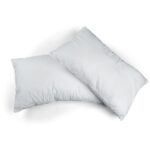Since price volatility has subsided and the price stayed completely within the range of the previous bar, either buying pressure has increased or selling pressure has decreased. Avoid mistakes like not recognizing the pattern correctly, ignoring the big picture, over-trading, and not managing risk well. Good analysis and following tested trading rules can help avoid these errors. Also, making sure your trades are executed quickly can be the difference between success and missing out.
For example, a false breakout of a key resistance level often results in a steady price decrease. The combination of the inside bar and the pin bar does not differ. In the daily time frame, the inside bar is not as common, so worthwhile trading patterns will be more obvious. If you look at the hourly chart, you will probably find several inside bars in one day, whereas on the daily chart, you can only find one inside bar in an entire day.
Select “Inside Bar” from the list, add it to the chart, and click OK. For more details on the indicator and its settings, check the Knowledge Base. Or activate the advanced tariff right now to access the full range of functionality. You can trade it in a similar way, a Sell Stop below the low of inside bar candlestick the larger candle, and stop loss above the high. Place a sell stop below the low, stops above the inside bar high.
You can look to short and have a sell stop order on the lows, and stop loss above the high of the first bar. Other traders would do it differently, but ultimately, this entry itself is not going to be profitable in the long run. In essence, the high and low of the third candle is contained within the high and low range of the second candle while the second candle’s range is contained within the first candle’s range. The price keeps squeezing tighter and tighter like a coiling spring getting ready to pop.
The stop loss would normally be placed on the other side of the inside bar pattern. Trading with the trend does give you a chance to make large gains but don’t discount this strategy for a counter trend move. We will have 2 price points that we will pay attention to when considering our profits.
Inside Bars are widely used in technical analysis due to their simplicity and potential to catch strong price movements. They can be found in various time frames but are more reliable in higher ones like the daily chart. The bullish inside bar setups above formed on the USDJPY daily time frame. Note that this pair was in a strong uptrend leading up to both setups.
To gain a real advantage, traders should use advanced tools that show the dynamics of buying and selling activity, such as footprint charts. It is better to wait for a test of the breakout level before entering a long position at the green clusters, where buyers have shown their dominance. The following two candles provided a chance to implement this strategy (4). Market sells confirm aggressive selling pressure breaking out of the consolidation zone formed by the double inside bar.
What does an inside bar bullish mean?
- If you trade the Inside Bar in this scenario, you know that you have the trend in the back of you.
- This is true whether we’re trading an inside bar, pin bar or wedge breakout.
- Traders wait for the price to break out above or below the inside bar, and then enter the trade in that direction, hoping it will lead to a strong trend.
- This means an absence of significant buying/selling pressure, which could break the previous bars’ high or low.
- Last but not least, the size of the inside bar relative to the mother bar is extremely important.
- When trading on a smaller intraday price chart, like the 15-minute chart, traders need to be aware of the typical market conditions.
- This example demonstrates that footprint charts are a versatile tool for confirming classic technical analysis signals, such as the breakout of an inside bar.
The inside bar setup is capable of producing consistent profits, but only to the traders who mind the five characteristics discussed above. In my experience, the smaller the inside bar is relative to the mother bar, the greater your chances are of experiencing a profitable trade setup. Ideally, we want to see the inside bar form within the upper or lower half of the mother bar. It means always keeping your risk to no more than half the potential reward. So if your take profit is 200 pips, your stop loss can be no more than 100 pips away from your entry price. In fact, trading with the trend is the only way to trade an inside bar setup.
Therefore, breaking these price levels is crucial for the success of a potential long trade in the market. Similar to the bullish inside bar, the bearish inside bar is not defined by the color of its first or second candle. The ‘bearish’ nature of the inside bar is determined by its position on the chart. Traders should always watch the support and resistance levels closely. The image above shows how all the factors in this model work together. We see the key level, then the inside bar and the pin bar appear.
Trading Inside Bars in a Trending Market
The prior bar, the bar before the inside bar, is often referred to as the “mother bar”. You will sometimes see an inside bar referred to as an “ib” and its mother bar referred to as an “mb”.
- However, when you know what to look for, these setups can be quite profitable.
- It formed after a spike in buying activity, possibly triggered by news during the early European trading session.
- Therefore the tighter this consolidation is, the more volatile the ensuing breakout will be.
- The double inside bar is a series of candlesticks where price forms back-to-back inside bars.
The same holds true for the bearish inside bar pictured above – the formation at the lower range of the mother bar is more favorable as it provides you with a better risk to reward ratio. Again, this assumes that you are placing your stop loss above the high of the inside bar rather than the high of the mother bar. If using the more aggressive stop loss strategy, this means selecting inside bars that form near the upper or lower range of the mother bar. This allows you to achieve a much more favorable risk to reward ratio. If you have been trading for any length of time I’m sure you have heard this one many times.
You can look to place a sell stop on the lows, and a stop loss above the Inside Bar high. If you trade the Inside Bar in this scenario, you know that you have the trend in the back of you. It boils down to your risk management, your consistency, and everything else. I look to sell below the low, and stop loss above the high of the inside bar. You don’t have to follow me, you can trade a variation of it, it’s entirely up to you.
What Does an Inside Bar Pattern Represent?
Compared to inside bars, which are two-candlestick patterns, doji candles and their variations (long-legged, dragonfly, and gravestone) are single-candle patterns. Both inside bars and doji candles generally signify a period of indecision and uncertainty about the market’s direction. Yes, this includes dragonfly and gravestone dojis, which often indicate a rejection of further decisive price movement rather than a clear reversal. In fact, dragonfly and gravestone dojis frequently precede a shift from a trending market to a sideways (non-trending) market period. Here, we see a strong uptrend leading into the inside bar pattern. Looking at the two bars, the mother bar is represented by a long-bodied, bullish candle that made a new high, followed by a small bearish candle symbolizing the inside bar.
Understanding the Inside Bar Pattern
In this lesson, we’re going to discuss the five characteristics of a profitable inside bar setup. But before we do that, let’s first take a look at how an inside bar forms and what the pattern represents. The power of this method is that the price has a rapid reversal after the initial breakout from the Inside Bar.


